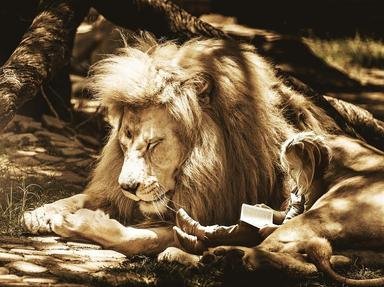The title is a quote from the movie adaptation of L Frank Baum's 'The Wonderful Wizard of Oz'; in both the film and the book Dorothy actually did meet a
- who proved to be an ally, nothing to fear. Oz is home to a range of other anthropomorphic figures, including the
, first met in 'Ozma of Oz'. A.A. Milne created a bear named
and his bouncy friend
, who can be found in the Hundred Acre Woods. One pair who share a story by Rudyard Kipling, however, are enemies rather than friends:
the bear is a friend of Mowgli, while
the tiger wants to kill him.
Aesop brought us the fable of 'The
and the Mouse, William Blake is responsible for writing about 'The
', and
features in a number of folk tales collected by Joel Chandler Harris. You will have to look in the Bible to find the story of
in the lions' den, while
, whose name is Turkish for lion, features in a number of the stories C.S. Lewis wrote about Narnia. The book 'Born Free' is Joy Adamson's account of her experience raising the lioness she named
.
Last, but not least, we have three fictional bears to consider.
, created by Don Freeman, has a button missing from his overalls.
, hailing from darkest Peru, is fond of marmalade.
was king of the armoured bears before he was exiled after killing his opponent in a fight; Lyra restores him to his throne after helping him regain his lost armour.

